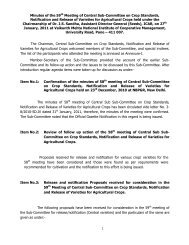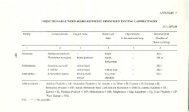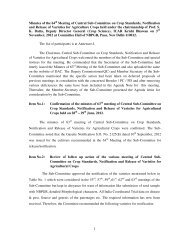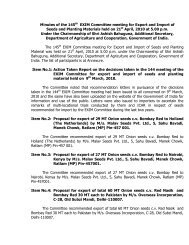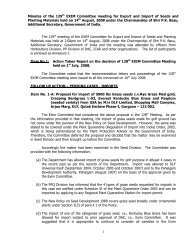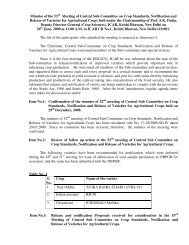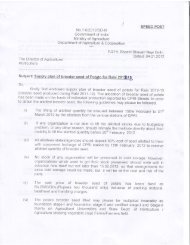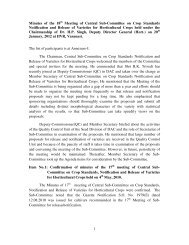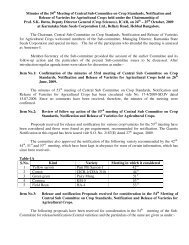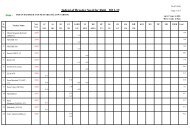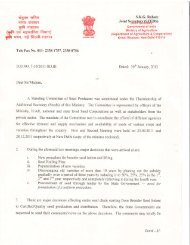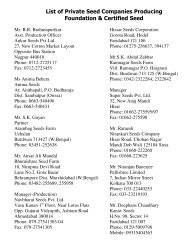2. SEED SAMPLING - SeedNet
2. SEED SAMPLING - SeedNet
2. SEED SAMPLING - SeedNet
You also want an ePaper? Increase the reach of your titles
YUMPU automatically turns print PDFs into web optimized ePapers that Google loves.
~--~<br />
kind of container or from streams of seed entering containers the following shall<br />
be regarded as the minimum requirement.<br />
Lot Size Number of primary samples to be taken<br />
Up to 500 kg At least five primary samples.<br />
501-3,000 kg One primary sample for each 300 kg, but not<br />
less than five primary samples.<br />
3,001-20,000 kg One primary sample for each 500 kg. but not<br />
less than 10 primary samples.<br />
20,001 and above One primary sample for each 700 kg, but not<br />
less than 40 primary samples.<br />
8. Care must be exercised in reducing composite samples. Careless splitting<br />
of the sample cannot be expected to produce two similar portions.<br />
9. Any seed known to have been treated with a poisonous fungicide should be<br />
identified so that the person who subsequently may handle the sample will be<br />
infonned of the potential hazard.<br />
10. While taking samples from machine sewed cotton bags, a few stitches at<br />
,oneof the top comers can be loosenlbroken and then this break can pe closed with<br />
hand stapling device after the contents of the bag have been sampled or a self<br />
adhesive label shall be affixed to ensure proper sealing and to avoid a tampering.<br />
11. The weight of the sample drawn should not be less than the weight of the<br />
submitted sample prescribed in the Table <strong>2.</strong>1.<br />
MEmOD OF OBTAINING PRIMARY SAMPLES<br />
The primary samples are drawn with the aid of suitable seed triers/or by hand<br />
in case of chaffy/non free-flowing seeds.<br />
When the lot is in bags, the bags to be sampled should be selected at random<br />
throughout the lot and primary samples drawn by inserting the trier gently into the<br />
bags, pointing upwards at an angle of about 30 to the horizontal, with the hole<br />
facing downward until it reaches the centre of the bag. The trier is then revolved<br />
8



